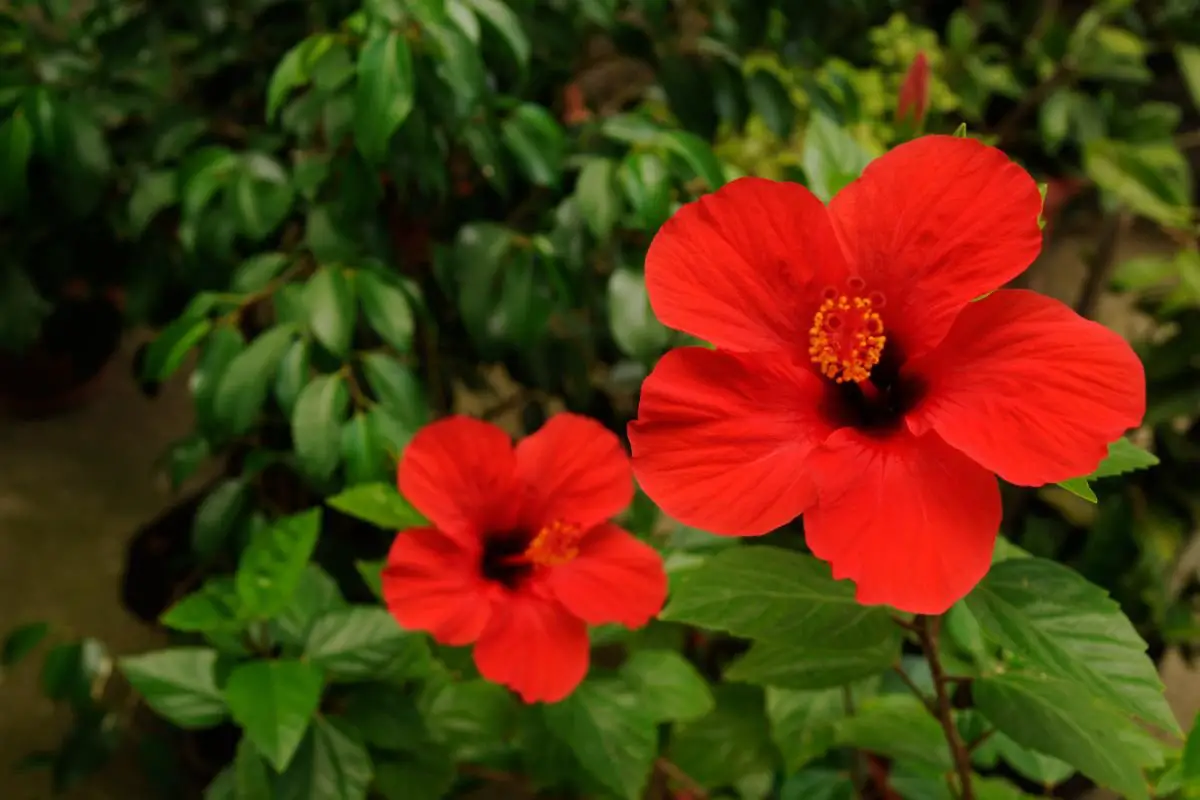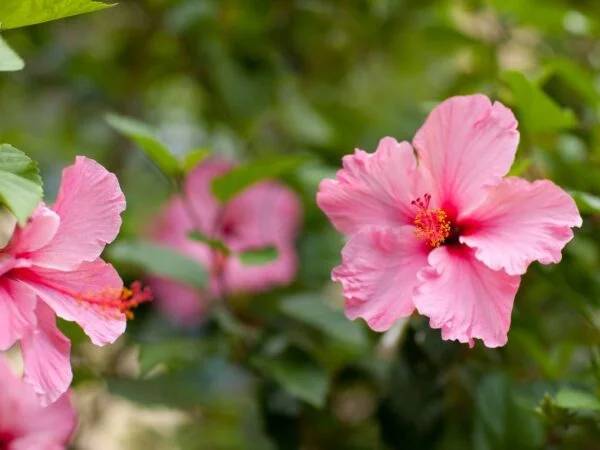Are you wondering when the best time is to plant hibiscus outdoors? Knowing the ideal planting window can make a significant difference in the success of your hibiscus garden. By understanding the contrast between different seasons and their impact on hibiscus growth, you can ensure vibrant blooms and healthy plants.
Planting hibiscus at the right time is crucial for optimal growth and blooming. In this guide, we will delve into the specific factors that influence the ideal planting time for hibiscus outdoors. From seasonal considerations to weather patterns, we will provide valuable insights to help you plan your hibiscus garden effectively.
Key Takeaways
- Plant Hibiscus at the Right Time: Ensure you plant hibiscus outdoors during the appropriate season for optimal growth and blooming.
- Proper Preparation is Key: Adequately prepare the planting site by choosing a sunny location, amending the soil, and providing proper drainage.
- Follow Correct Planting Procedures: Plant hibiscus at the right depth, water thoroughly, and mulch to retain moisture and suppress weeds.
- Provide Essential Aftercare: Regularly water, fertilize, and prune your hibiscus to promote healthy growth and vibrant blooms.
- Address Common Challenges Promptly: Watch out for pests, diseases, and environmental stressors, taking quick action to prevent damage to your hibiscus plants.
- Explore Different Hibiscus Varieties: Consider various hibiscus species and cultivars suited for outdoor planting to add diversity and beauty to your garden.
Understanding Hibiscus
Types
Hibiscus plants come in various types, including the Tropical Hibiscus with large, colorful flowers and the Hardy Hibiscus known for its cold tolerance. Each type has distinct characteristics such as flower size, color variations, and growth habits. When choosing a hibiscus type for outdoor planting, consider factors like your local climate and personal preferences to ensure successful growth.
Growth habits
Understanding the growth patterns of hibiscus plants is crucial for their care. These plants typically develop into shrubs or small trees, depending on the variety. Recognizing how they mature over time helps in providing adequate space and support for optimal growth. Factors like sunlight exposure, watering frequency, and soil quality play significant roles in influencing the growth habits of hibiscus.
Climate needs
Successful outdoor planting of hibiscus requires specific climate conditions to thrive. Hibiscus plants prefer warm temperatures ranging from 60-90 degrees Fahrenheit and high humidity levels. It is essential to ensure that your local climate meets these requirements to promote healthy growth and vibrant blooming throughout the flowering season. Consider factors like frost risk and extreme weather conditions when determining if your area is suitable for planting hibiscus outdoors.
Ideal Planting Time
Seasonal Guide
Plant hibiscus following a seasonal guide to ensure optimal growth throughout the year. Understand the best times for planting hibiscus outdoors to maximize blooming and health. Adjust your planting schedule based on seasonal variations to promote strong, vibrant hibiscus plants.
Temperature Considerations
Monitor temperature changes regularly to provide the ideal conditions for your hibiscus plants. Shield them from extreme temperatures by adjusting planting times accordingly. Ensure that your region's temperature fluctuations are taken into account when deciding on the planting schedule for hibiscus.
Preparing to Plant
Selecting Location
Sunlight
- Provide adequate sunlight for healthy hibiscus growth.
- Position hibiscus plants in locations with sufficient sunlight exposure.
- Understand the importance of sunlight in the development of hibiscus flowers.
Soil Type
- Determine the ideal soil type for planting hibiscus outdoors.
- Choose well-draining soil rich in nutrients for hibiscus cultivation.
- Test soil quality to ensure it meets the requirements for hibiscus growth.
Soil Preparation
Before planting hibiscus outdoors, it is crucial to prepare the soil properly. Incorporate organic matter into the soil to improve its quality. This step creates a suitable environment for hibiscus roots to establish and grow effectively. By ensuring that the soil is well-prepared, you set a strong foundation for your hibiscus plants to thrive.
When selecting a location for your hibiscus plants, consider the amount of sunlight they will receive. Hibiscus plants require adequate sunlight exposure to promote healthy growth and vibrant blooms. By positioning them in areas with sufficient sunlight, you support their overall development. Understanding the significance of sunlight in nurturing hibiscus flowers can lead to successful cultivation outcomes.
To determine the ideal soil type for planting hibiscus outdoors, prioritize well-draining soil that is nutrient-rich. This type of soil provides essential nutrients for hibiscus plants while allowing excess water to drain effectively. Testing the soil quality before planting ensures that it meets the specific requirements necessary for optimal hibiscus growth. Choosing the right soil type sets the stage for healthy and flourishing hibiscus plants in your garden.
Planting Process
Step-by-step guide
Plant hibiscus outdoors by first choosing a sunny location with well-draining soil. Dig a hole twice as wide as the root ball and mix in organic matter. Gently remove the plant from its container, loosen the roots, and place it in the hole. Fill the hole with soil, tamp it down lightly, and water thoroughly.
To ensure successful planting, water the hibiscus immediately after planting to help settle the soil around the roots. Mulch around the base of the plant to retain moisture and suppress weeds. Monitor for any signs of stress or pests, and provide regular care as needed.
Watering needs
Understand that hibiscus plants require consistent moisture but dislike standing water. Water deeply once or twice a week, allowing the top few inches of soil to dry out between watering sessions. Adjust watering frequency during hot weather or if your plant shows signs of wilting.
Establish a watering routine based on weather conditions; during rainy periods, reduce watering frequency to prevent over-saturation. Remember that proper watering is crucial for healthy growth and vibrant blooms on your hibiscus plants.
Aftercare Essentials
Fertilization Schedule
To ensure optimal growth, develop a fertilization plan for your hibiscus plants. Select suitable fertilizers rich in nutrients like nitrogen, phosphorus, and potassium. Apply these fertilizers during the growing season to support healthy foliage and vibrant blooms. Monitor the plant's response to fertilization for any signs of nutrient deficiencies or excesses.
Pruning Tips
Master effective pruning techniques to maintain the health and appearance of your hibiscus plants. Remove any dead or overgrown branches regularly to stimulate new growth and improve air circulation around the plant. Shape your hibiscus by trimming it to promote a bushier, more compact form that enhances its overall aesthetic appeal.
Seasonal Care Tips
Summer care
Implement summer care practices to support hibiscus growth during the warmer months. Ensure adequate water and protect plants from excessive heat. Monitor for signs of stress or dehydration in hot weather.
Winter protection
Take measures to protect hibiscus from cold temperatures and frost during winter months. Provide insulation and shelter to minimize exposure to harsh conditions, preventing damage.
Common Challenges
Pests
Pests like aphids and spider mites are common threats to hibiscus plants, feeding on their sap and causing damage. Regularly check for these pests by inspecting the leaves and stems. To protect your hibiscus, use insecticidal soap or neem oil as natural pest control measures. These options effectively combat pests without harming the plant.
Diseases
Recognizing diseases such as powdery mildew and leaf spot early is crucial to prevent further damage. Keep an eye out for yellowing leaves, black spots, or white powdery residue on the foliage. Ensure proper air circulation around the plant to reduce humidity levels that can promote disease development. Treat any signs of disease promptly with fungicidal sprays or pruning infected parts to prevent spreading.
Encouraging Blooms
Sunlight Exposure
To encourage blooms on hibiscus plants, ensure adequate sunlight exposure for healthy growth. Position them in areas receiving the right amount of sunlight. Monitor the exposure to prevent issues like sunburn or stunted growth.
Proper fertilization is crucial for blooming hibiscus plants. Understand the importance of providing essential nutrients through proper fertilization. Follow a schedule to cater to their needs by choosing suitable fertilizers.
Hibiscus Varieties for Outdoors
Hardy hibiscus
Hardy hibiscus varieties are known for their ability to thrive in diverse climate conditions. These plants exhibit resilience and can withstand both cold winters and hot summers. When selecting hardy hibiscus for outdoor planting, look for varieties that offer a range of colors and bloom sizes. The hardy hibiscus will bring a vibrant touch to your garden while requiring minimal maintenance.
Tropical hibiscus
Tropical hibiscus plants add a touch of exotic beauty to outdoor spaces. These varieties boast large, colorful flowers that bloom profusely throughout the warm season. To care for tropical hibiscus in non-tropical regions, ensure they receive ample sunlight and consistent watering. Creating a suitable environment with well-draining soil and regular fertilization will help tropical hibiscus thrive outdoors, even in areas with cooler climates.
Summary
In understanding hibiscus planting outdoors, you've learned about the ideal timing, preparation steps, planting process, aftercare needs, seasonal care tips, common challenges, encouraging blooms, and various hibiscus varieties suitable for your garden. By following these guidelines diligently, you're ensuring the best growth and blooming potential for your hibiscus plants. Remember to provide consistent care and attention to witness vibrant blooms and healthy foliage. Now armed with this knowledge, it's time to get your hands dirty and transform your outdoor space into a colorful oasis of hibiscus beauty.
Frequently Asked Questions
When is the ideal time to plant hibiscus outdoors?
The ideal time to plant hibiscus outdoors is in the spring after the last frost has passed. This allows the plant to establish itself during the warmer months and bloom beautifully during the summer.
How should I prepare the soil before planting hibiscus outdoors?
- Choose a well-draining location with plenty of sunlight.
- Amend the soil with organic matter like compost.
- Ensure the soil pH is slightly acidic, around 6.5 to 7.0.
- Remove any weeds or debris from the planting area.
What are the essential steps in the hibiscus planting process?
- Dig a hole twice as wide as the root ball but no deeper.
- Gently remove the hibiscus from its container and loosen the roots.
- Place the plant in the hole and backfill with soil, pressing firmly around the base.
- Water thoroughly after planting.
How can I care for hibiscus plants after planting them outdoors?
- Water regularly, ensuring that the soil stays moist but not waterlogged.
- Apply a balanced fertilizer every 4-6 weeks during the growing season.
- Prune lightly to shape the plant and encourage new growth.
- Monitor for pests and diseases regularly.
What are some common challenges faced when growing hibiscus outdoors?
Common challenges include:
- Overwatering leading to root rot
- Underwatering causing stress and flower drop
- Pests like aphids, spider mites, and whiteflies
- Diseases such as powdery mildew or leaf spot
How can I encourage more blooms on my outdoor hibiscus plants?
To encourage more blooms:
- Deadhead faded flowers regularly to promote new blooms.
- Provide adequate sunlight for at least 6 hours a day.
- Use a bloom-booster fertilizer high in phosphorus.
- Ensure proper watering and maintenance practices.
Image Source: Paid image from CANVA





